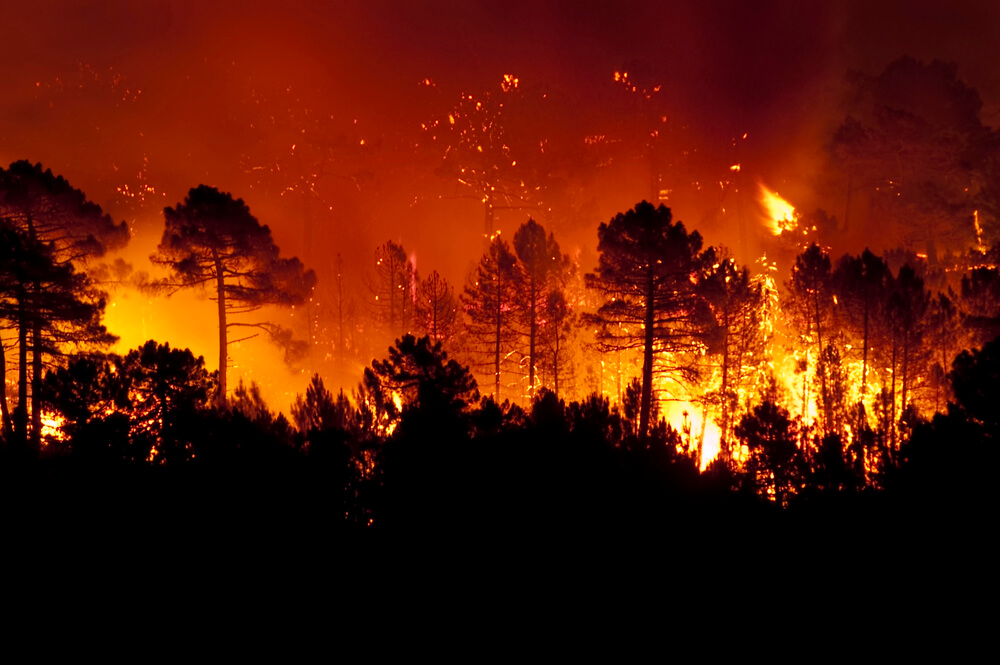“In Canada there was a town called Lytton. I say ‘was’ because on June 30th, it was burned to the ground,” said Prime Minister Justin Trudeau to a packed climate summit. Temperatures in Lytton, a small town in the southern interior of British Columbia, had hit an alarming record 49.6C, before the wildfires erased all but 30 homes.
This heat wave was part of a larger heat dome that blanketed large swaths of BC in the summer of 2021. The Lytton fire killed two people, and displaced thousands. The heat dome event itself was responsible for 619 deaths across BC and today comprises the deadliest weather event in Canadian history.
Before Lytton, there was Fort McMurray, Alberta, where more than 90,000 evacuees fled a firestorm that ripped through almost 600,000 hectares and destroyed more than 2400 homes and businesses. Dry hot weather for days preceding the wildfires set the perfect conditions for a blaze so large and fast that even seasoned firefighters could not imagine the eventual scale of the devastation.
And yet these examples are only a few of the recent disasters that have beset Canada. In the same year as the Lytton fires and the heat dome, BC experienced historic rainfall and flooding that destroyed highways and rail lines and became Canada’s costliest weather disaster.
Whether it’s climate change, natural disasters, global pandemics, energy grid failures, mass migration — and more, Canada must become more disaster-proofed and disaster-prepared.
We also need to prepare our leaders of today and tomorrow to become disaster-ready. Engineers have a role to play.
One hundred years have now passed since the creation of the ‘Iron Ring’ ceremony to induct engineers into a valued and trusted profession. Engineers have long been known for their ability to craft the infrastructure that makes up the backbone of our country — roads, bridges, pipelines, complex energy and computer systems.
But it’s imperative we change how we educate engineers to prepare them to serve Canada for today’s many increasingly complex challenges. That means educating leaders in the critical skills necessary for disaster mitigation, adaptation and recovery.
For climate change, mitigation has meant finding ways to keep the earth’s temperatures below a 2C increase. We’ve not been very successful thus far, so adaptation becomes increasingly important.
Adaptation means addressing how we can change our communities to thrive through a 2C+ increase, by creating wildfire protections, creating heat safe zones and adapting our infrastructure to work properly in a warmer world, a world with more flooding and severe storms. This might mean creating low energy cooling solutions, urban forestry and decentralized water, information, food and logistics networks, and more.
Disaster recovery addresses the increasing global complexity of our challenges, and the competencies required to come back from disasters, such as combined policy expertise, international finance, geopolitics, governance, conflict, food security and logistics knowledge.
When there’s nothing left, how do communities start again? It has been four years since the Lytton fires and the community has still not been rebuilt. After two years, only a single store had been rebuilt.
Canada must get better at responding to disasters.
We need to go beyond conventional engineering and leadership education to make this happen. Siloed education will no longer suffice.
The next generation engineering professional must learn to integrate technology and science, system level design thinking, policy and community engagement, integrate Indigenous knowledge with the social and applied sciences.
Our future engineers must also safeguard the most vulnerable populations who are disproportionately affected by disasters. The heat dome disproportionately killed those who were elderly, poor, lived with disability, or lived alone.
We don’t have to invent from scratch. There are models we can use to recast our education.
The United Nations has established models to address how communities can recover after war — a meaningful tool to adapt for climate and other disasters. Or we can learn from ‘peace engineering,’ pioneered at Drexel and the University of New Mexico, which uses engineering with a complex systems approach to promote peace and social justice and address social and political issues that lead to conflict and violence.
At the University of British Columbia, we’ve started on this path by creating new engineering programs that are collaborative, applied and multidisciplinary. We’ve brought together four schools: architecture, community and regional planning, nursing and engineering. Together they tackle issues like coastal adaptation, carbon capture and sequestration, climate and health, clean energy and transportation and heat management, from multiple perspectives.
It’s time Canada had robust disaster response and recovery plans ready — and the people to deliver them.
Photo courtesy of DepositPhotos




